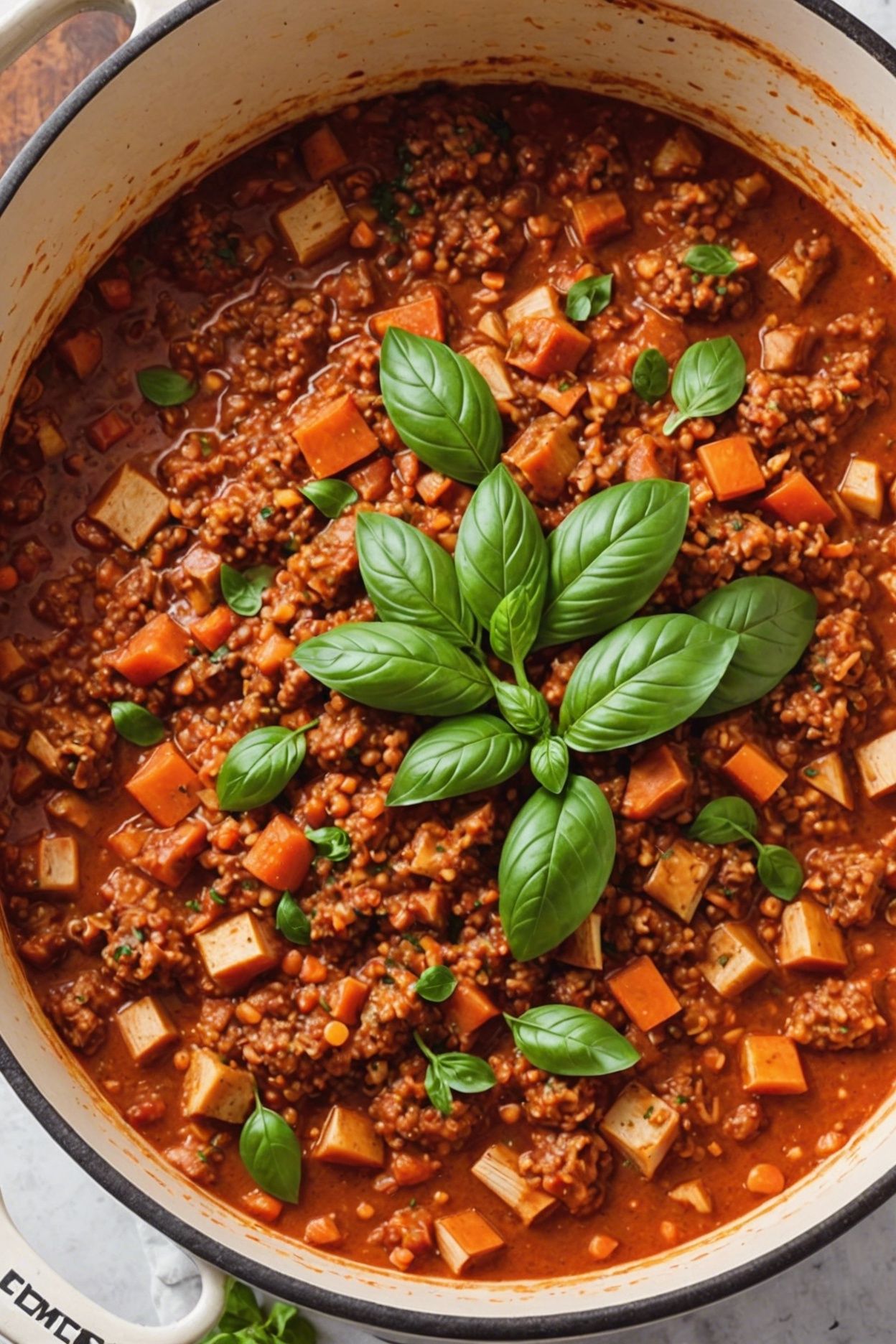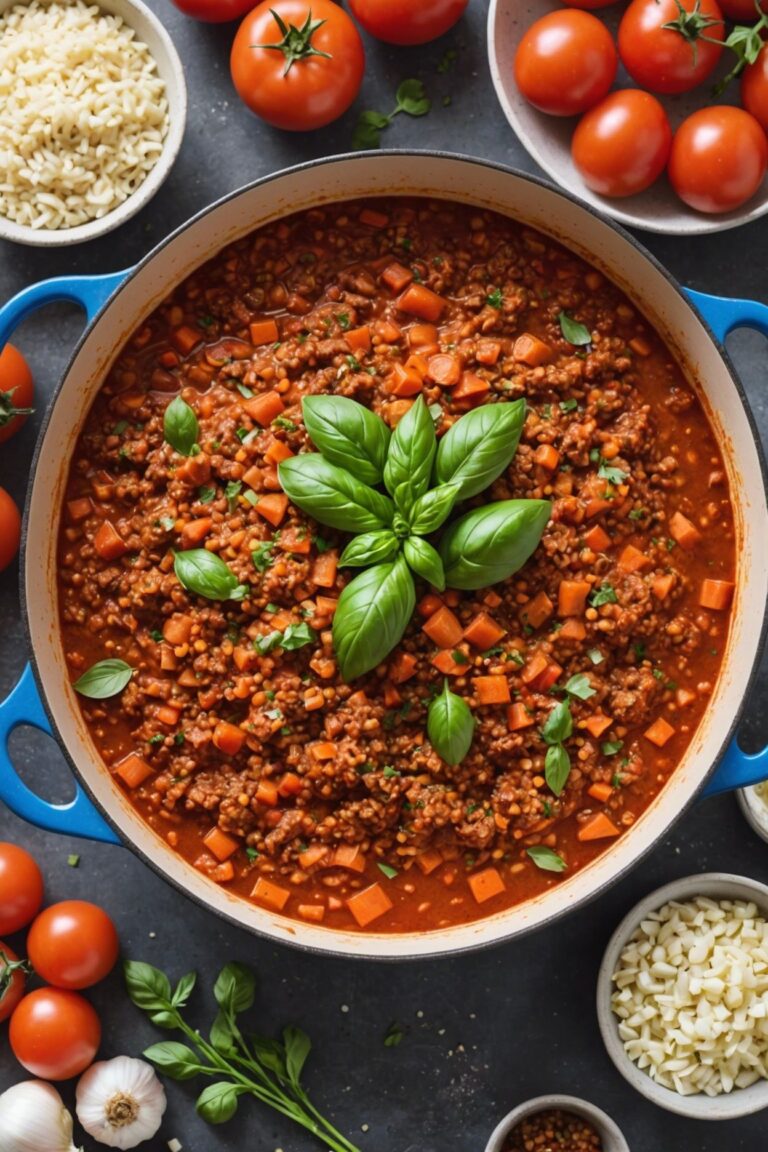My New Cookbook is Out! Check Out Now!
Turkey Bolognese
A flavorful twist on the classic Italian dish, this Turkey Bolognese recipe packs a punch with its aromatic blend of onion, garlic, and carrot, simmered with ground turkey and a rich tomato sauce. Perfect for a cozy night in, this hearty sauce is begging to be paired with your favorite pasta.
Ready Time
1 hrs 45 mins
Yields
9 servings
Ingredients
- 1 pound ground turkey breast
- 1 medium onion, finely chopped
- 2 cloves of garlic, minced
- 1 medium carrot, finely chopped
- 1 can (28 oz) crushed tomatoes
- 1 tsp dried basil
- 1 tsp dried oregano
- Salt and pepper, to taste
- 1/4 cup red wine (optional)
- 1/4 cup beef broth
- 1 tablespoon olive oil
- 1 bay leaf
Instructions
Heat the olive oil in a large Dutch oven or pot over medium-high heat.
Add the chopped onion and cook until it’s translucent, about 5 minutes.
Add the minced garlic and cook for another minute, until fragrant.
Add the chopped carrot and cook for an additional 2-3 minutes, until it starts to soften.
Add the ground turkey breast, breaking it up with a spoon as it cooks, until it’s no longer pink, about 5-7 minutes.
Add the crushed tomatoes, dried basil, dried oregano, salt, and pepper.
Stir well to combine.
If using red wine and beef broth, add them now, stirring to combine.
Bring the sauce to a boil, then reduce the heat to low and simmer, covered, for 30 minutes.
If using a bay leaf, add it now.
After 30 minutes, remove the bay leaf and let the sauce simmer uncovered for an additional 10-15 minutes, stirring occasionally, until the flavors have melded together and the sauce has thickened slightly.
Serve the Turkey Bolognese hot, garnished with your favorite toppings or served with pasta of your choice.
Notes
Use 90% lean ground turkey breast for a leaner option or 85% for a more traditional Bolognese flavor and texture. Make sure to chop the onion, garlic, and carrot finely to ensure they cook evenly and quickly.
If using red wine, be sure to cook it until the liquid has almost completely evaporated to avoid a boozy flavor.
Bay leaves can be omitted or substituted with a sprig of fresh rosemary for a different flavor profile. For a quicker option, simmer the sauce for 15-20 minutes, but keep in mind the flavors might not meld together as seamlessly.
This sauce freezes well, so consider making a double batch and storing it in airtight containers for up to 3 months.
Turkey Bolognese tastes even better the next day, so consider making it a day ahead and refrigerating or freezing it until ready to serve. Feel free to customize the sauce with your favorite herbs, spices, or other ingredients to make it your own!
Nutrional Value
- Calories: 320
- Total Fat: 12g
- Saturated Fat: 2.5g
- Cholesterol: 60mg
- Sodium: 450mg
- Total Carbohydrates: 23g
- Dietary Fiber: 4g
- Sugars: 8g
- Protein: 35g






